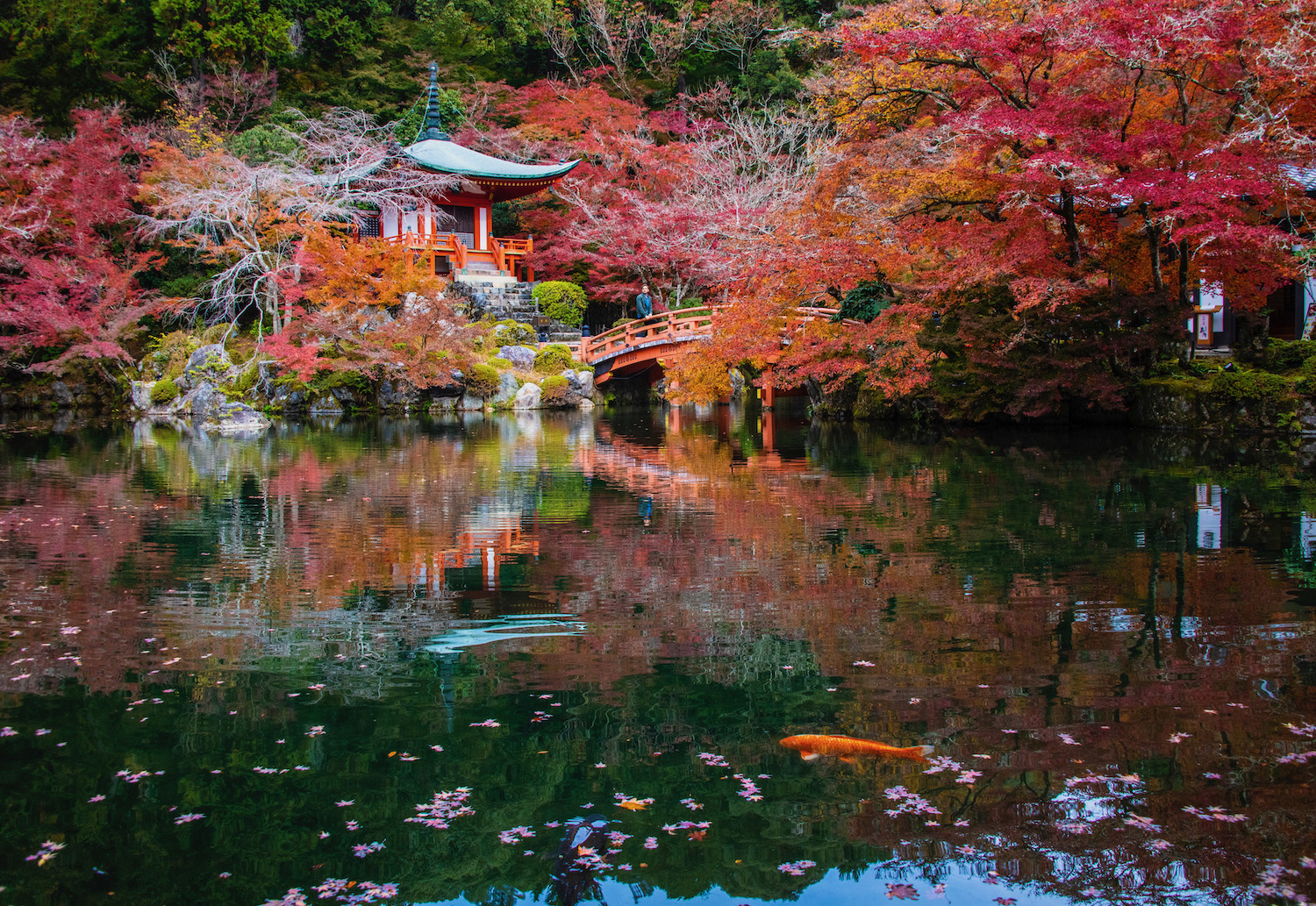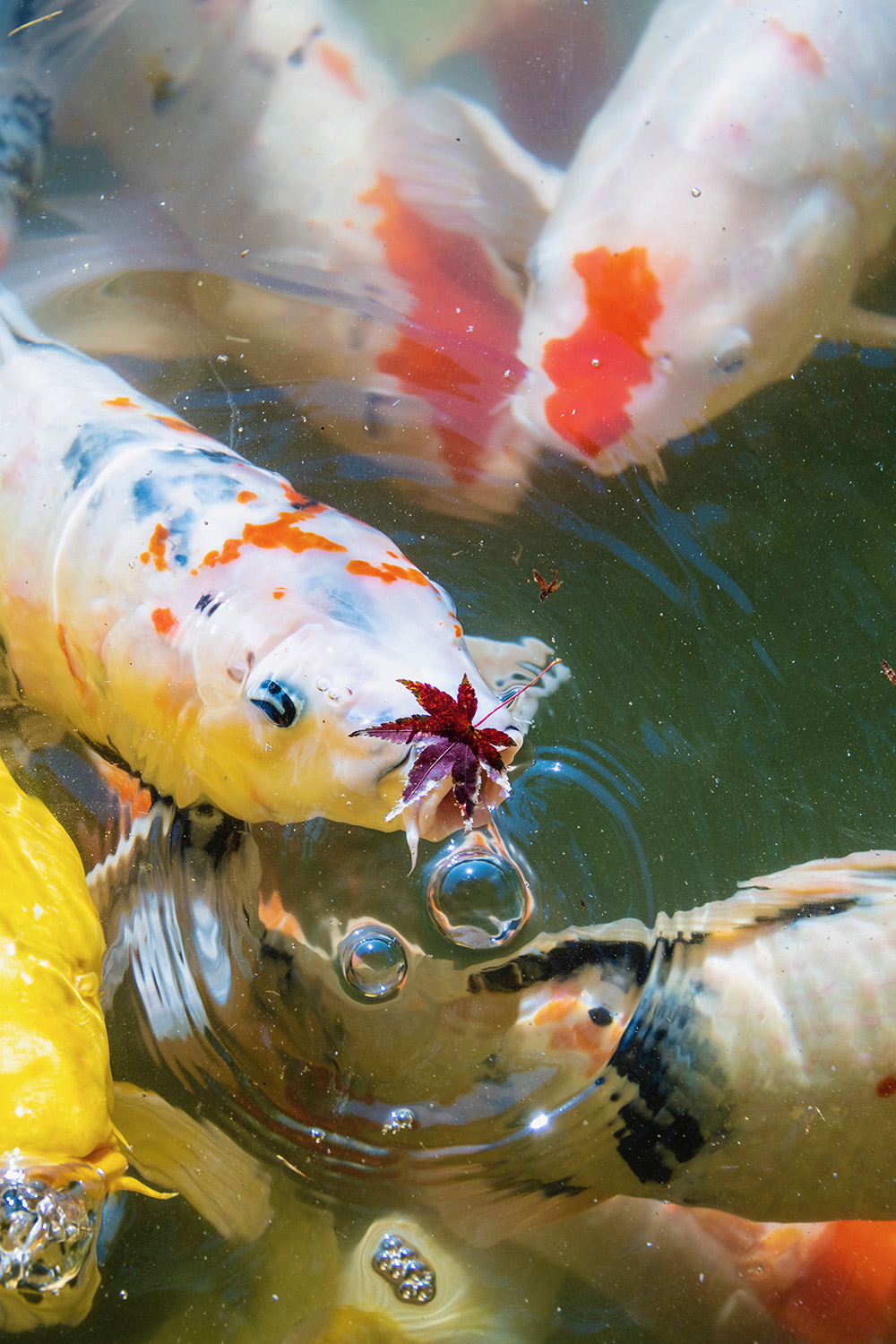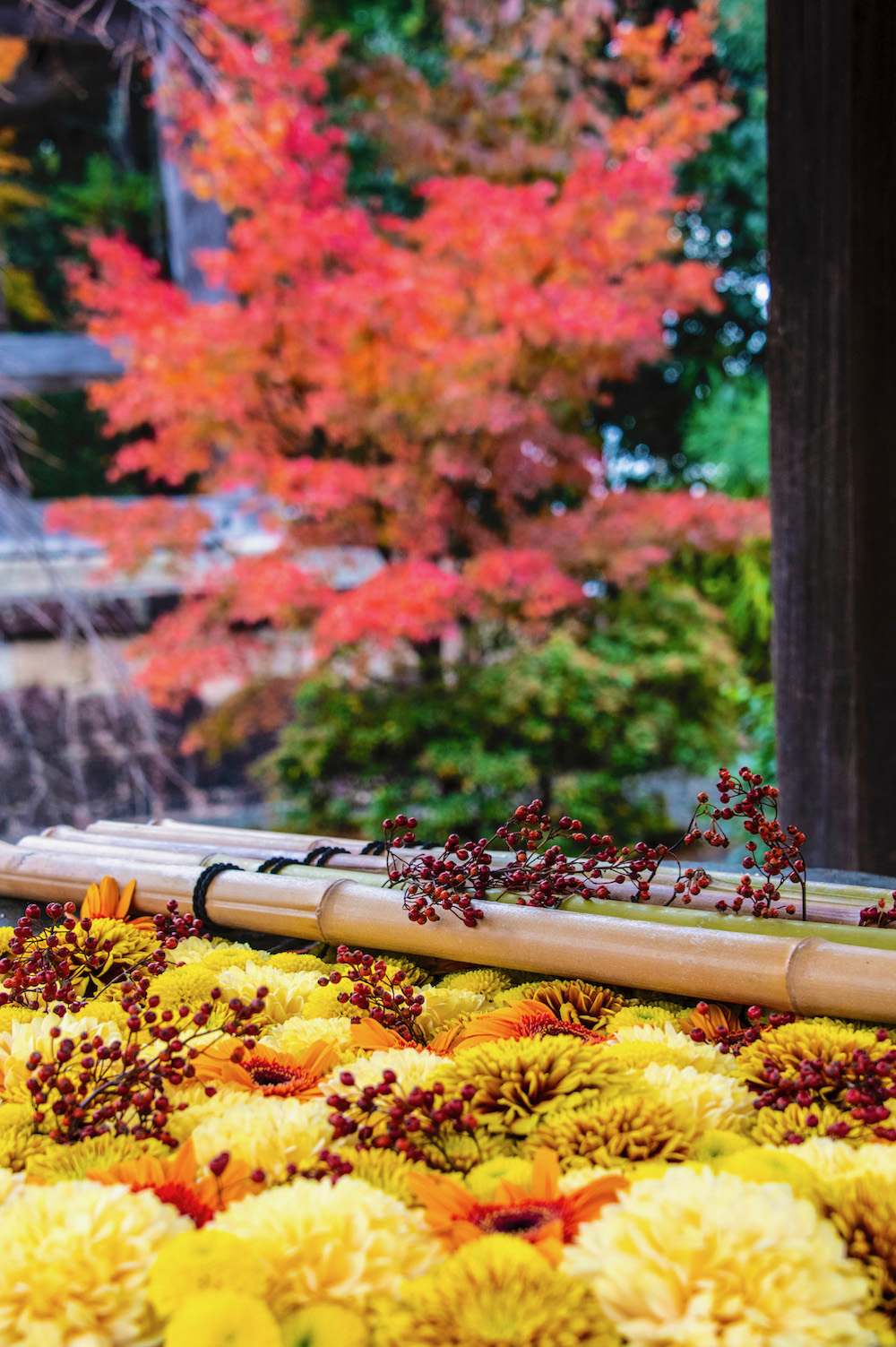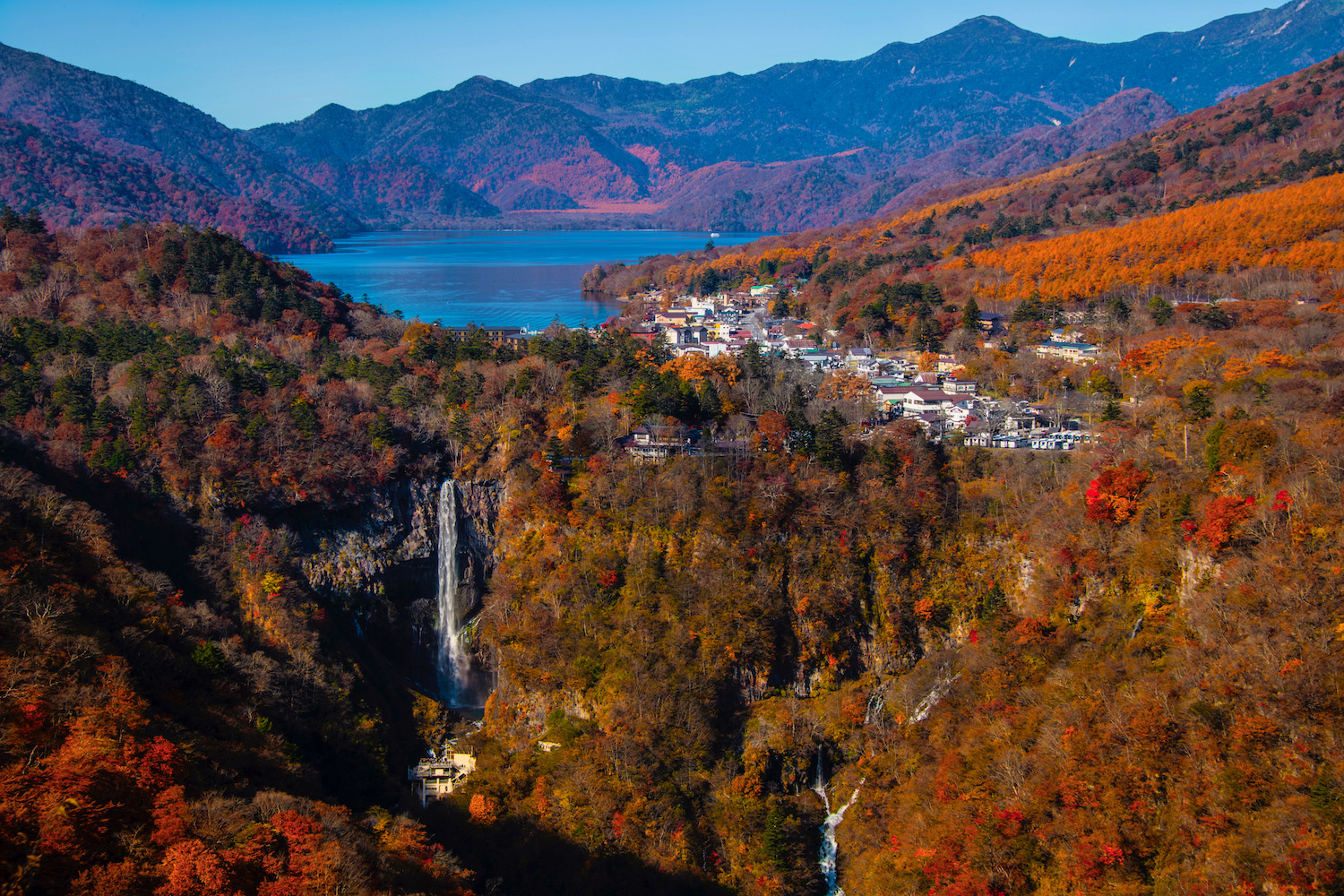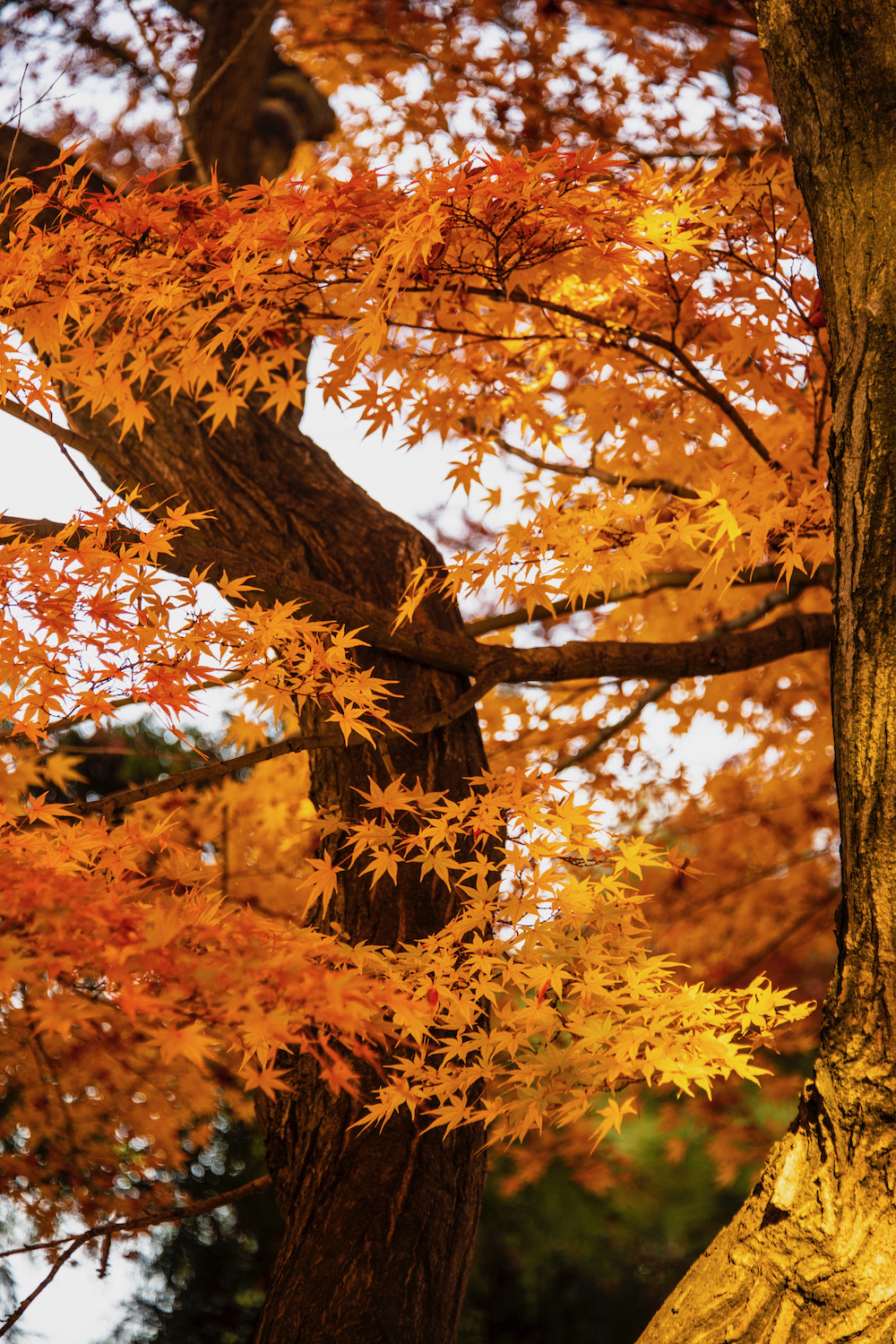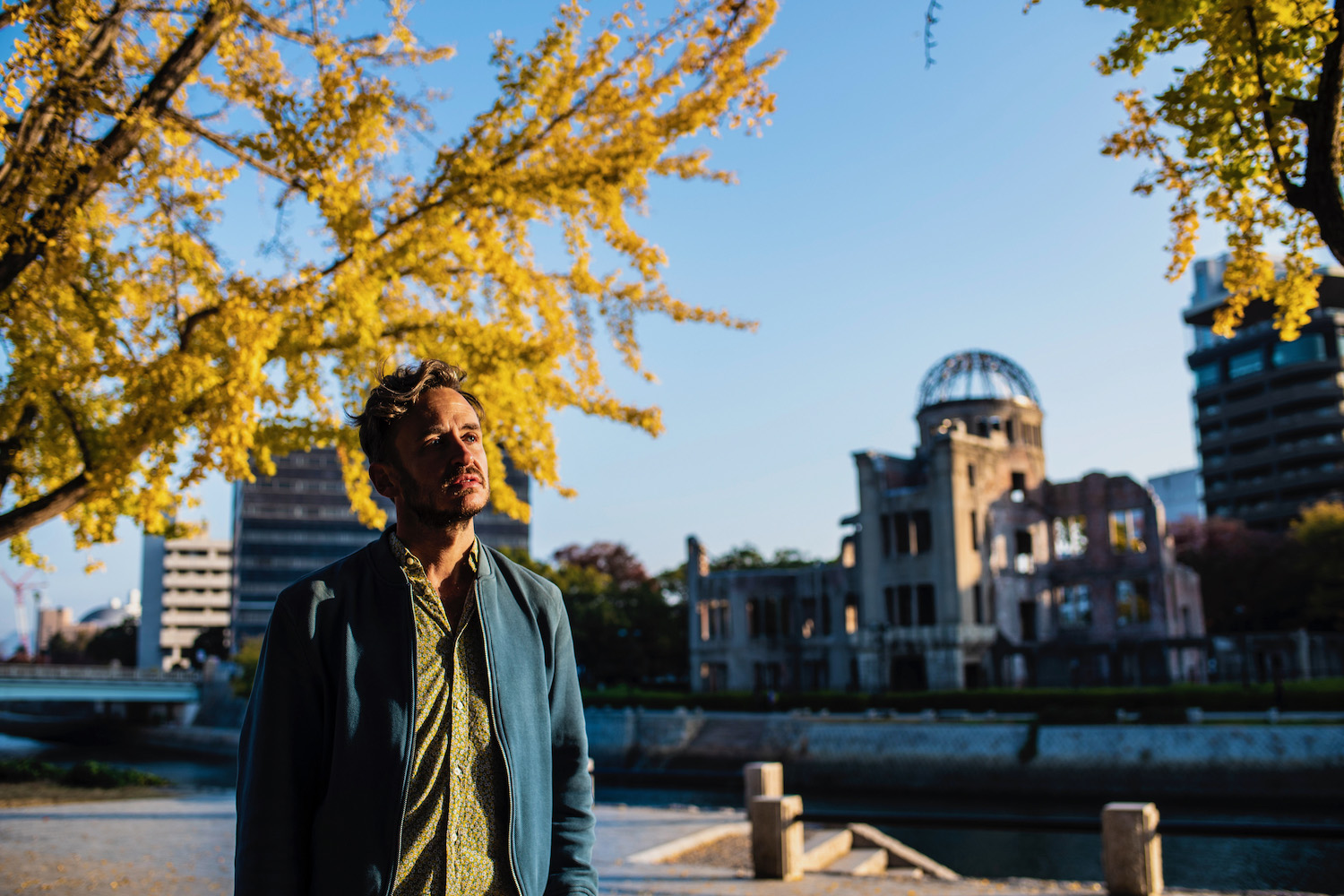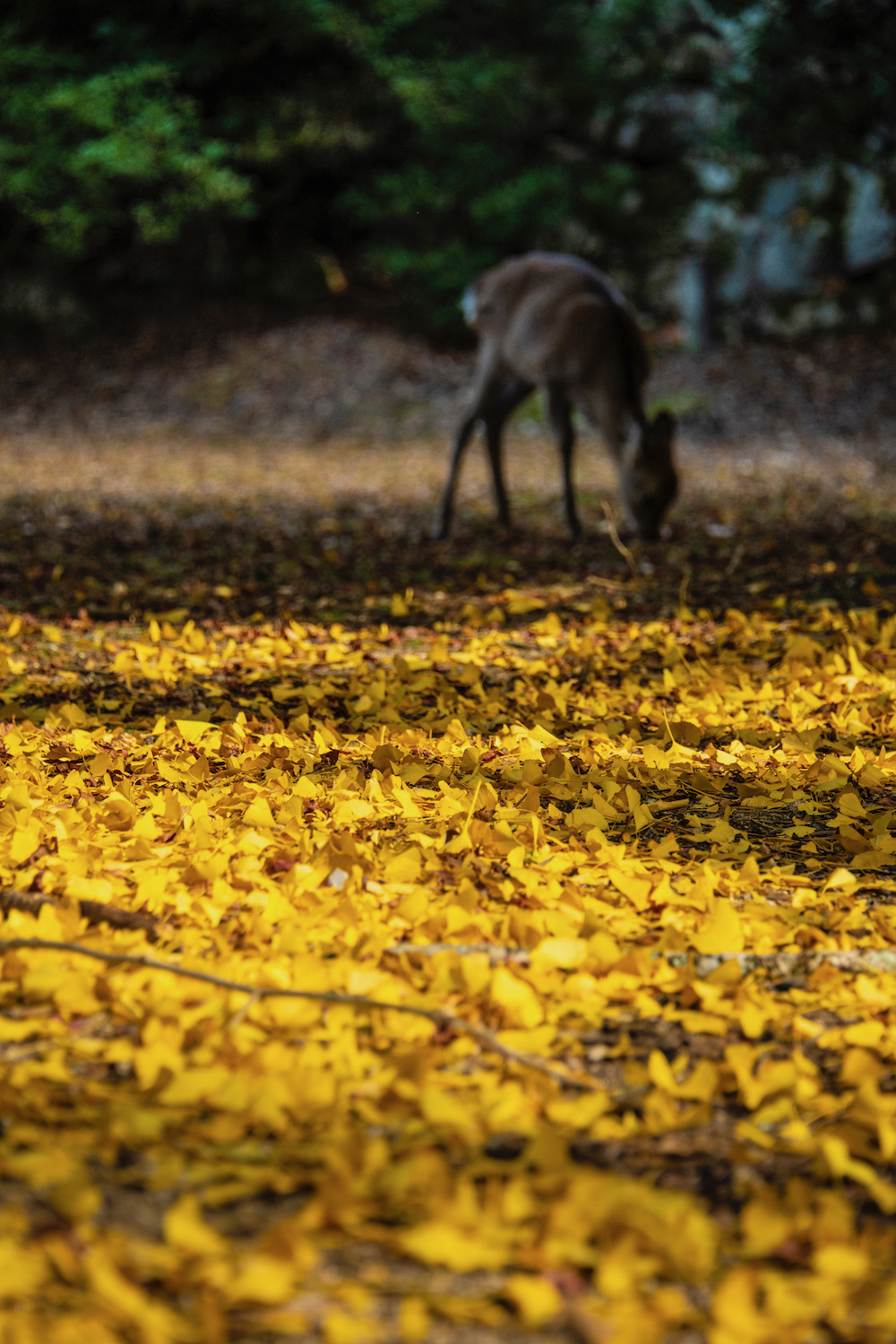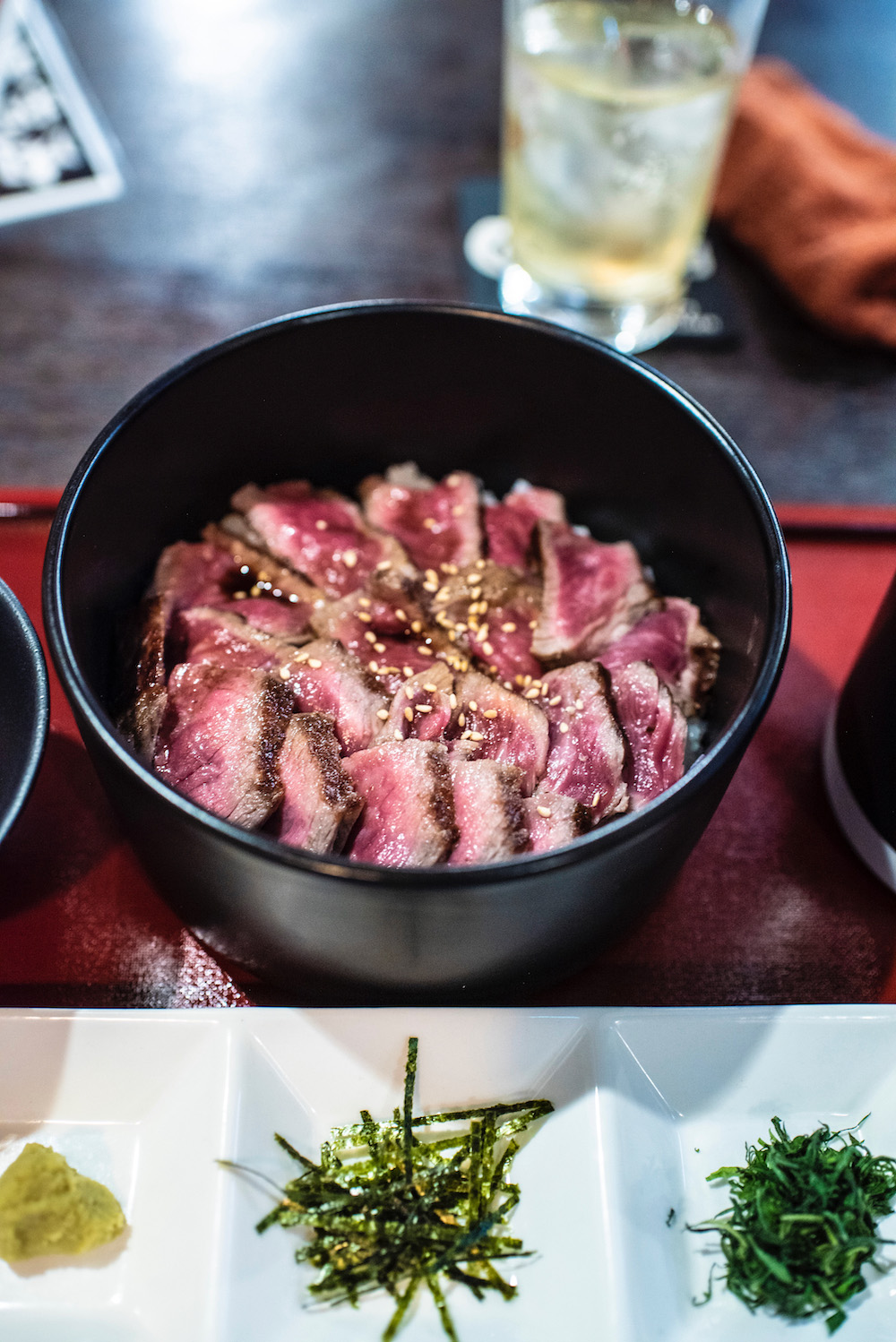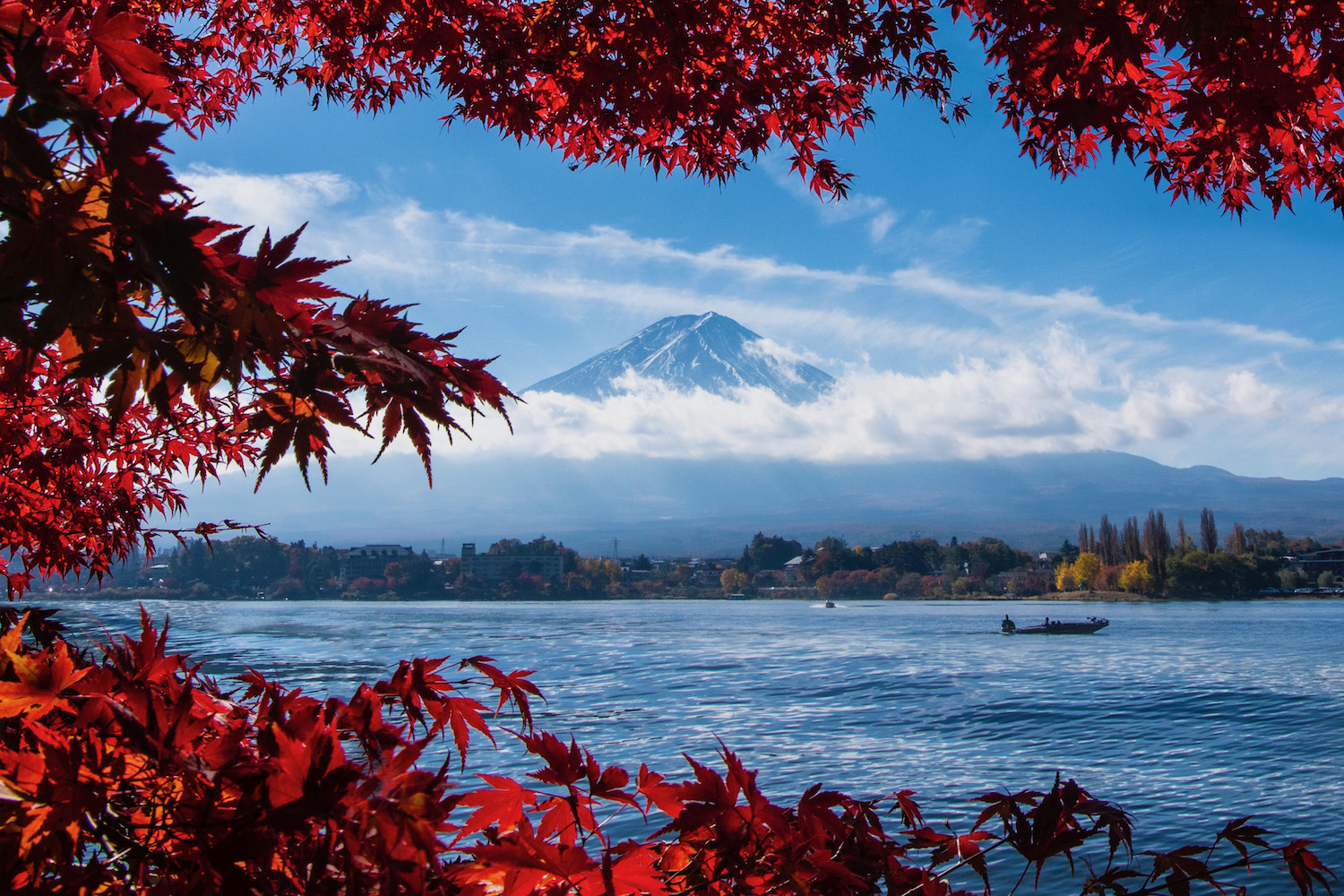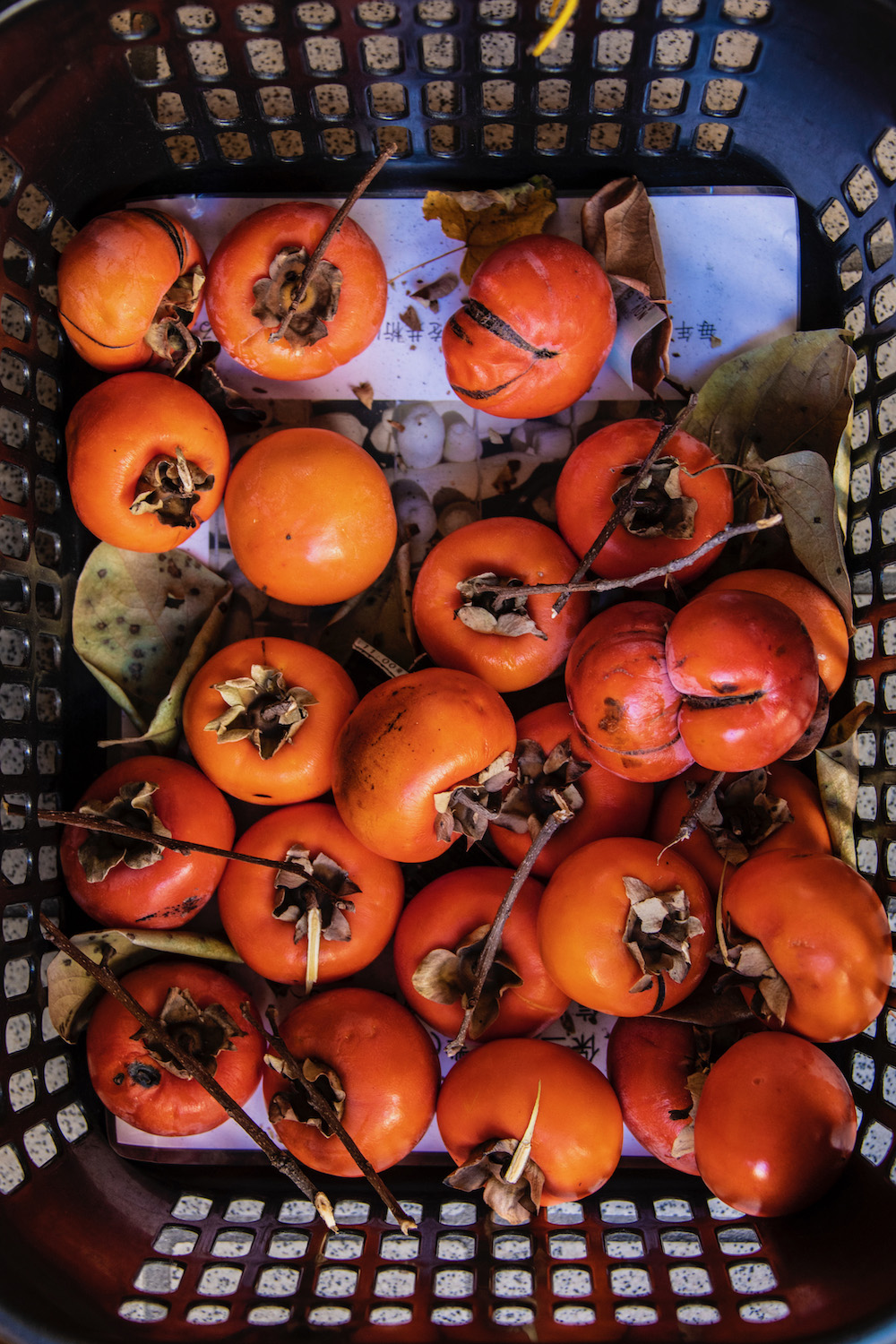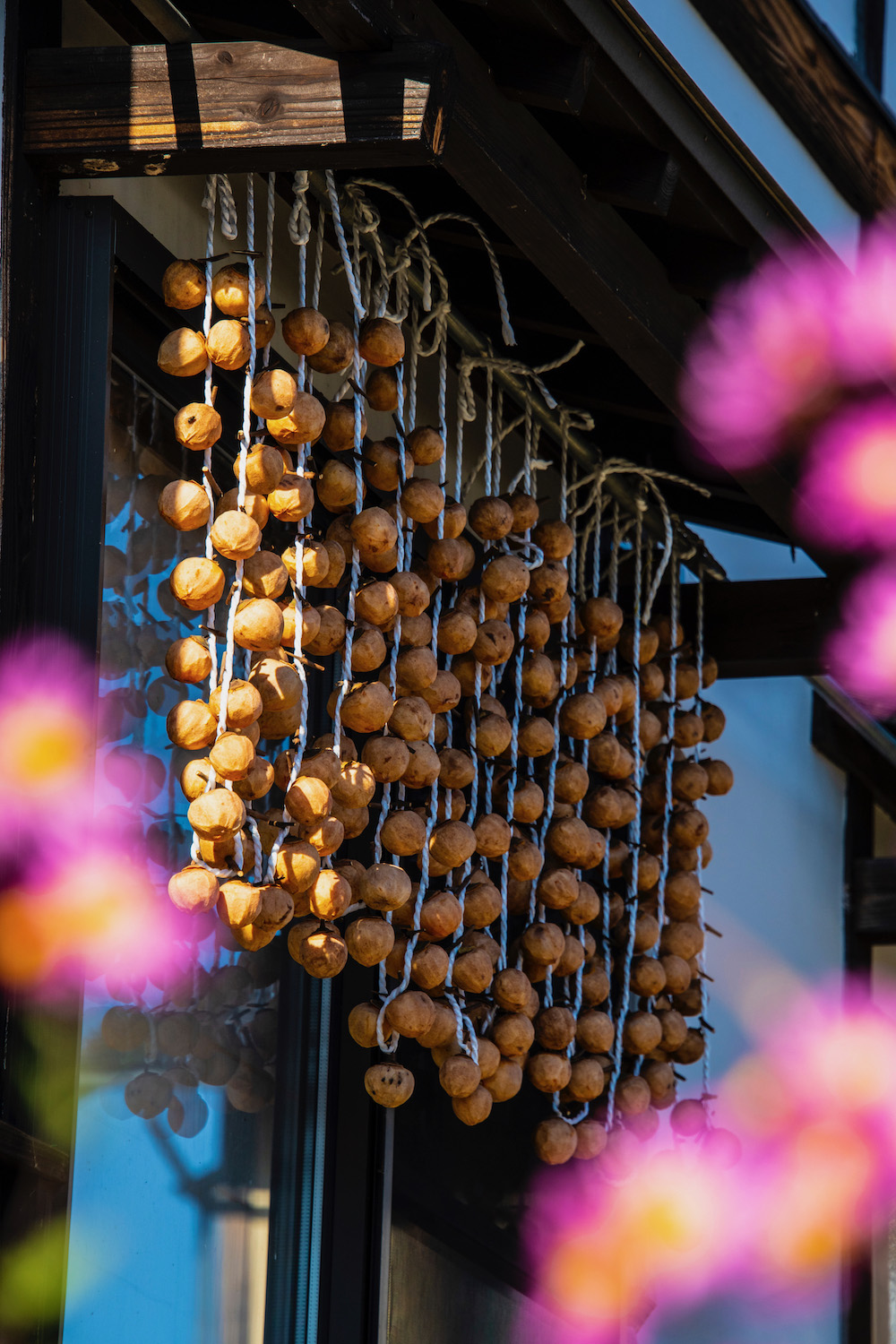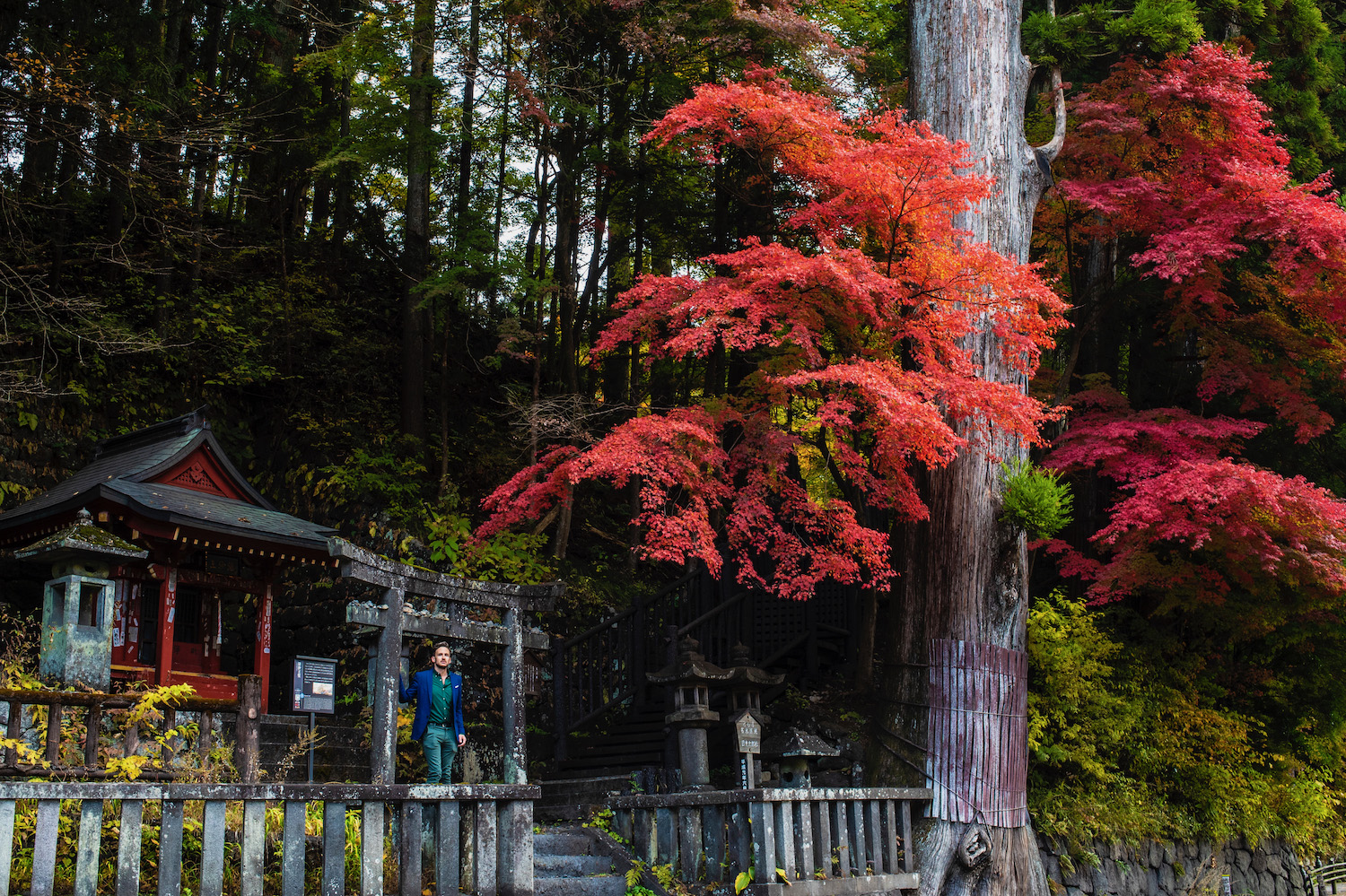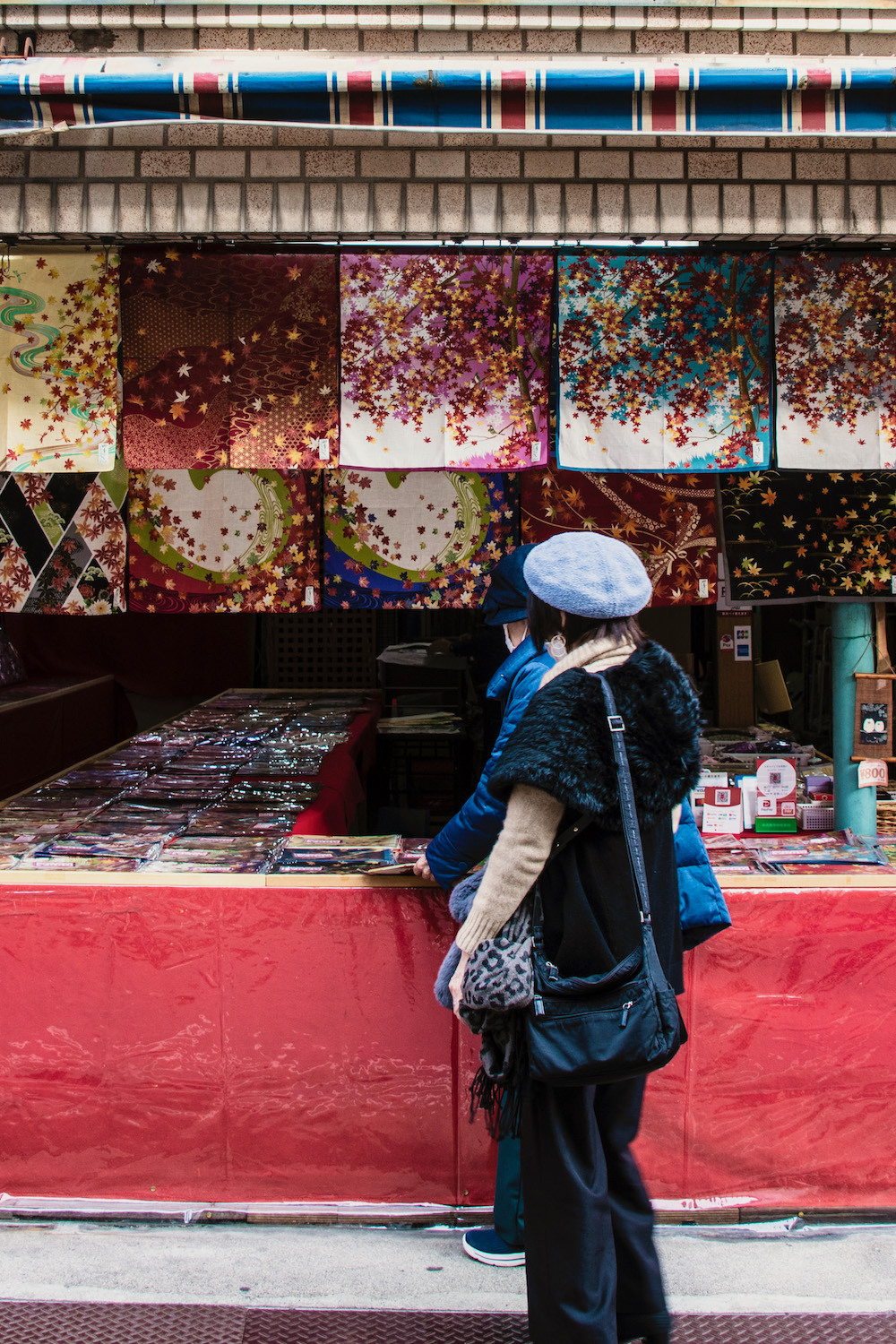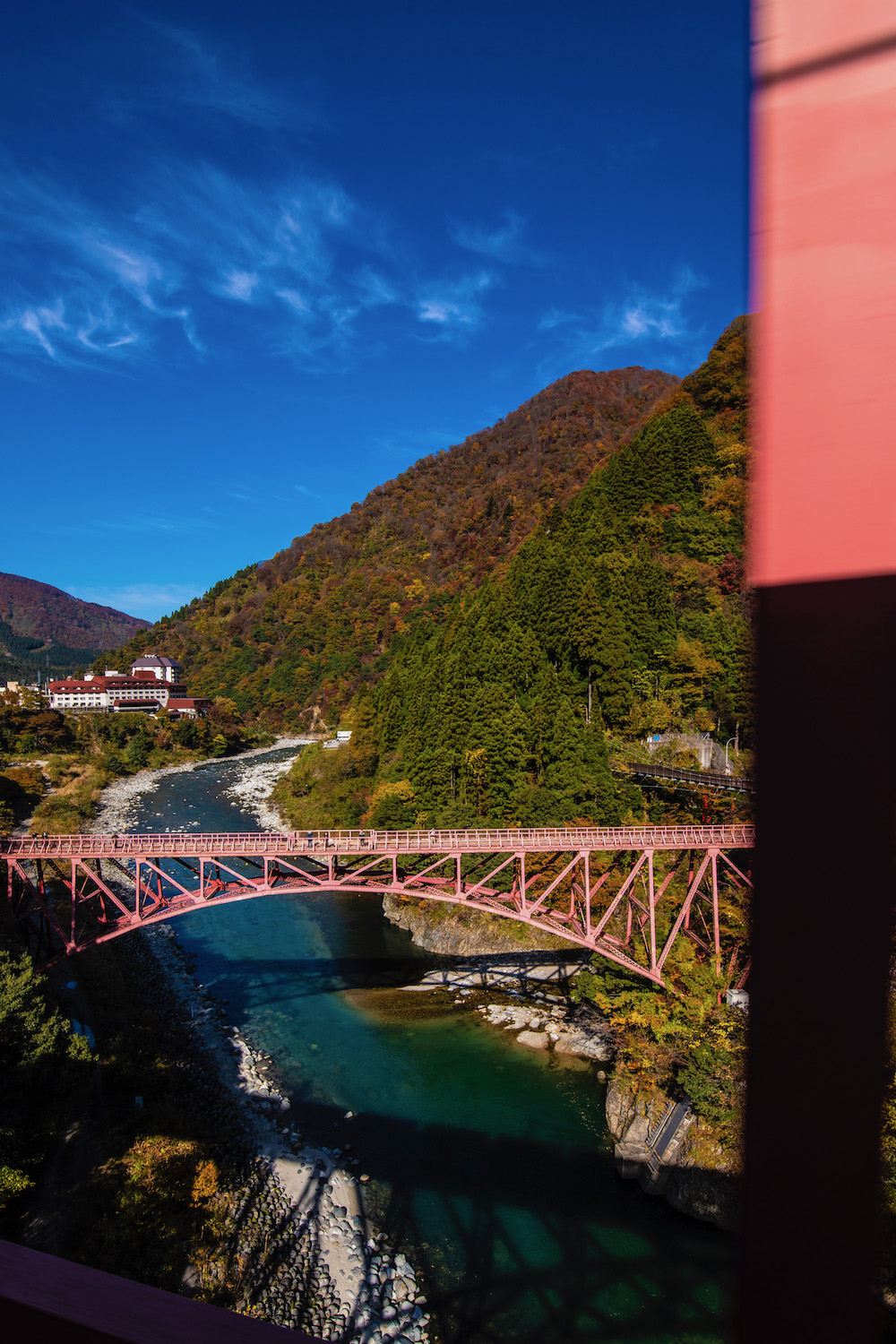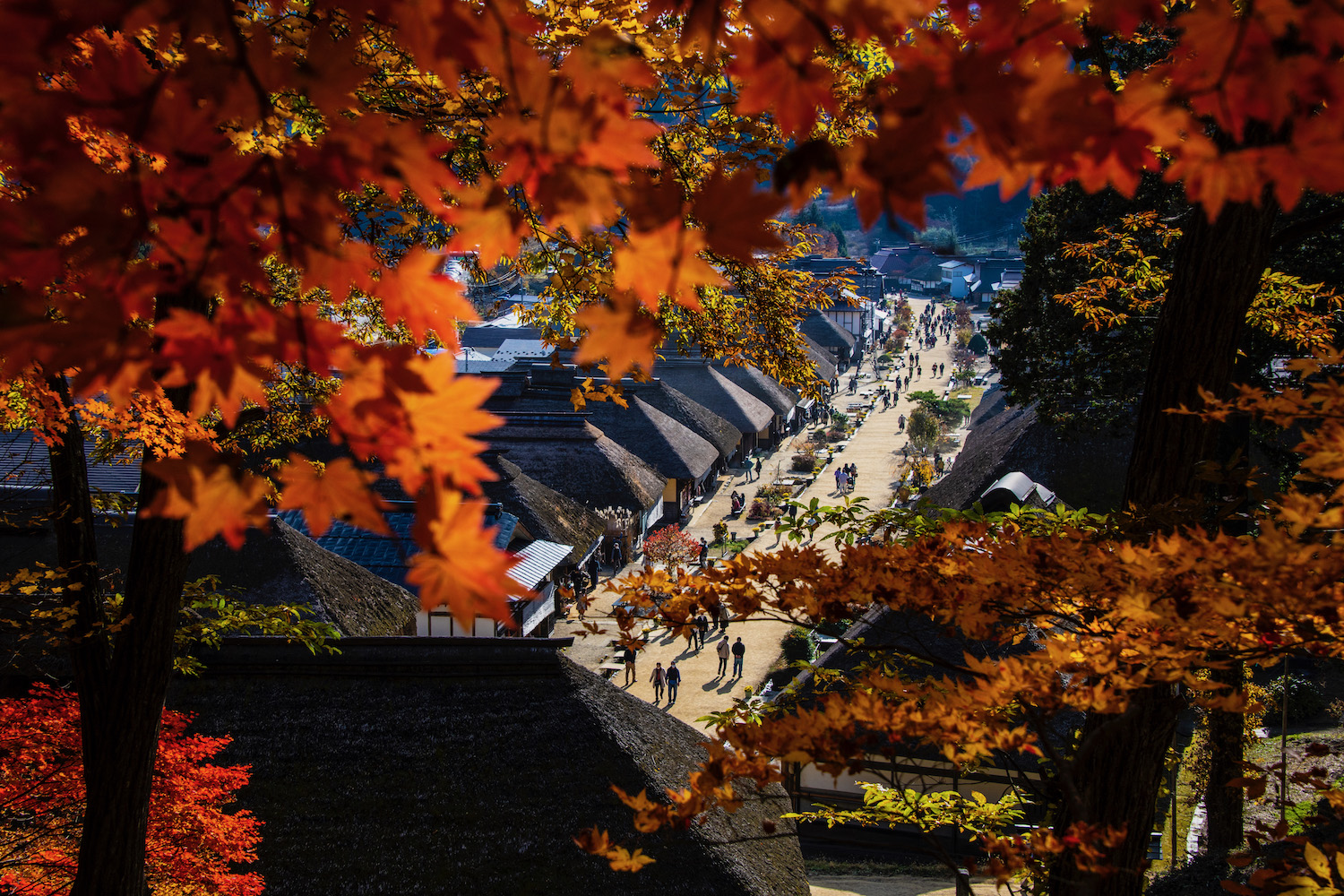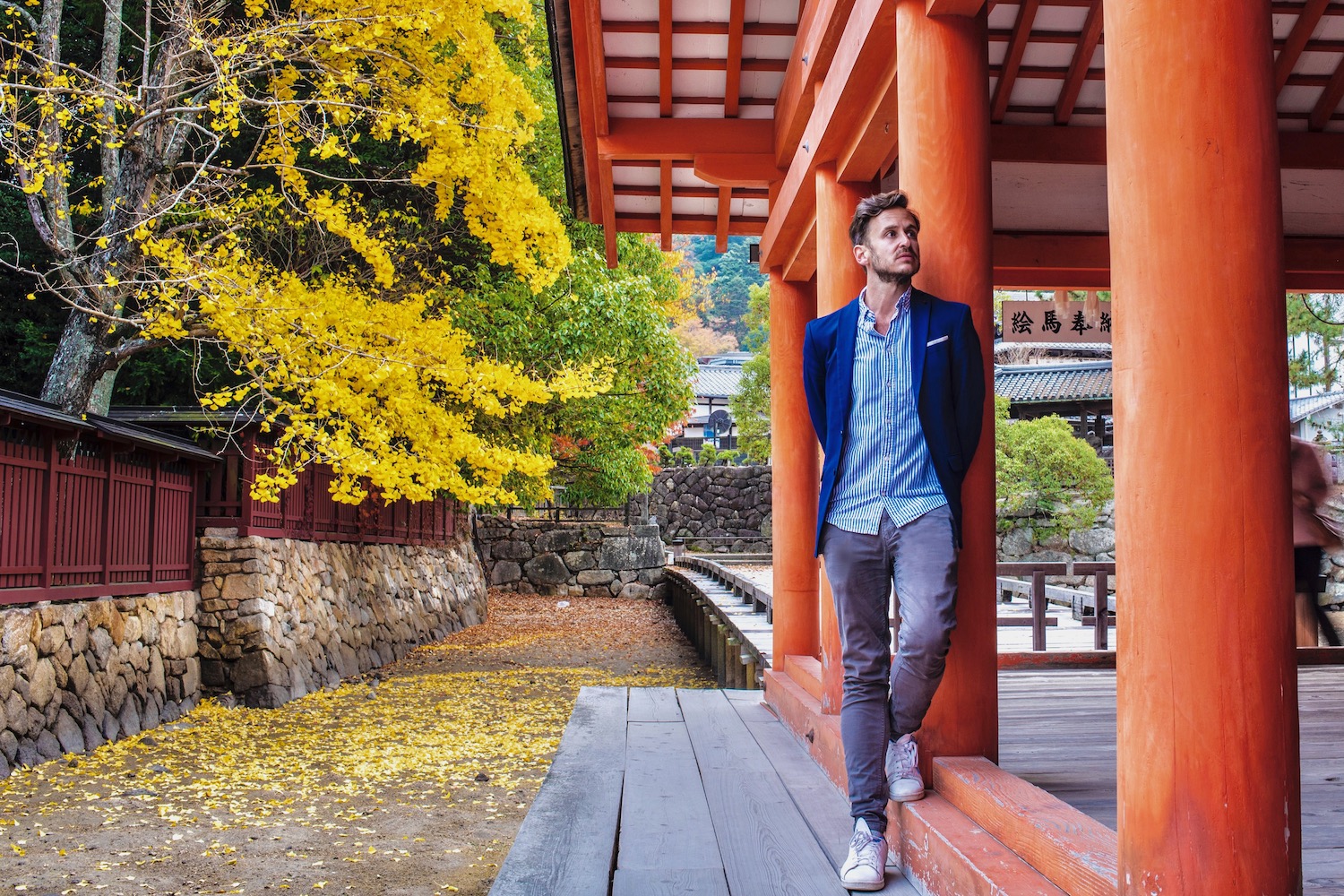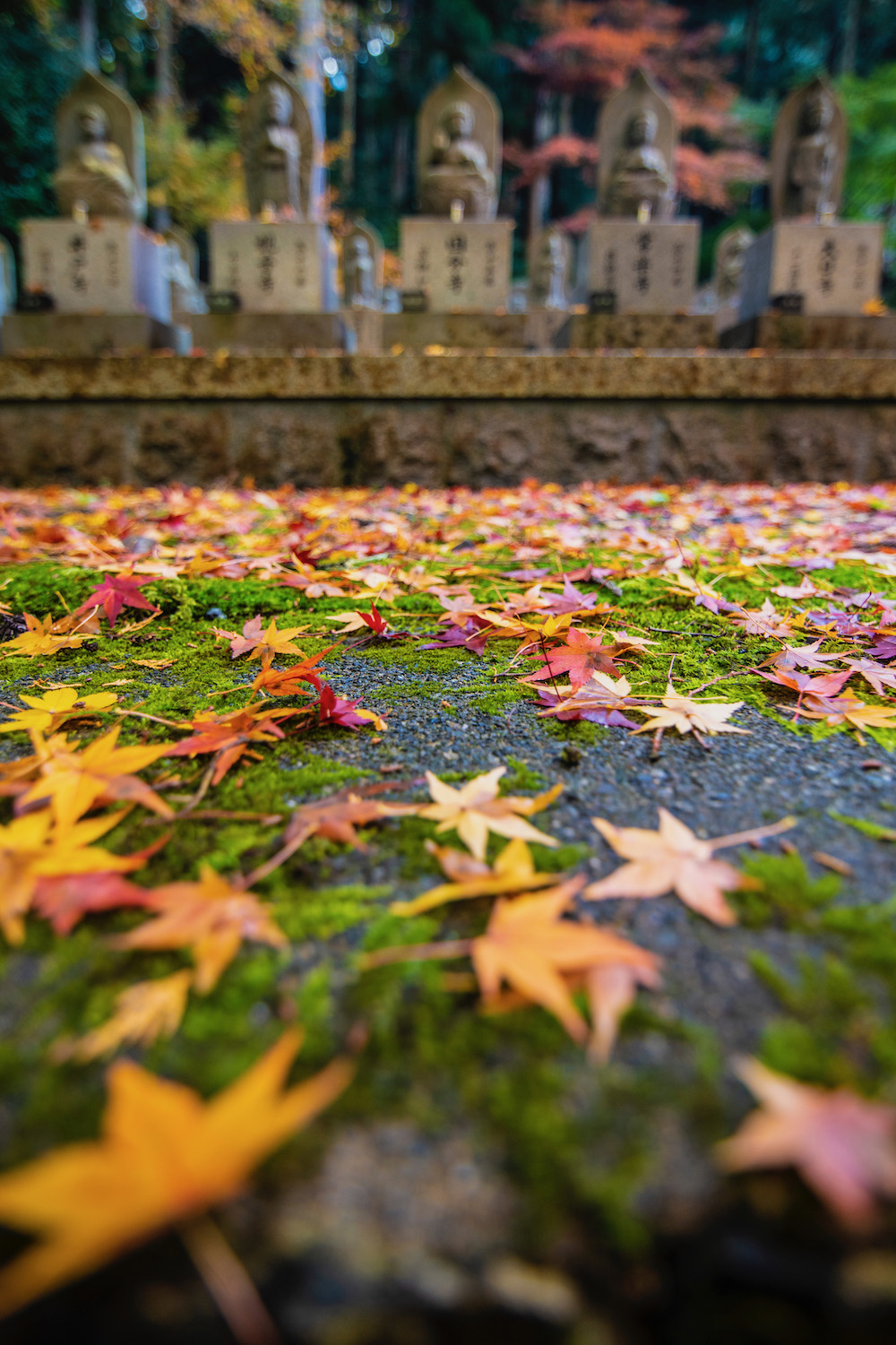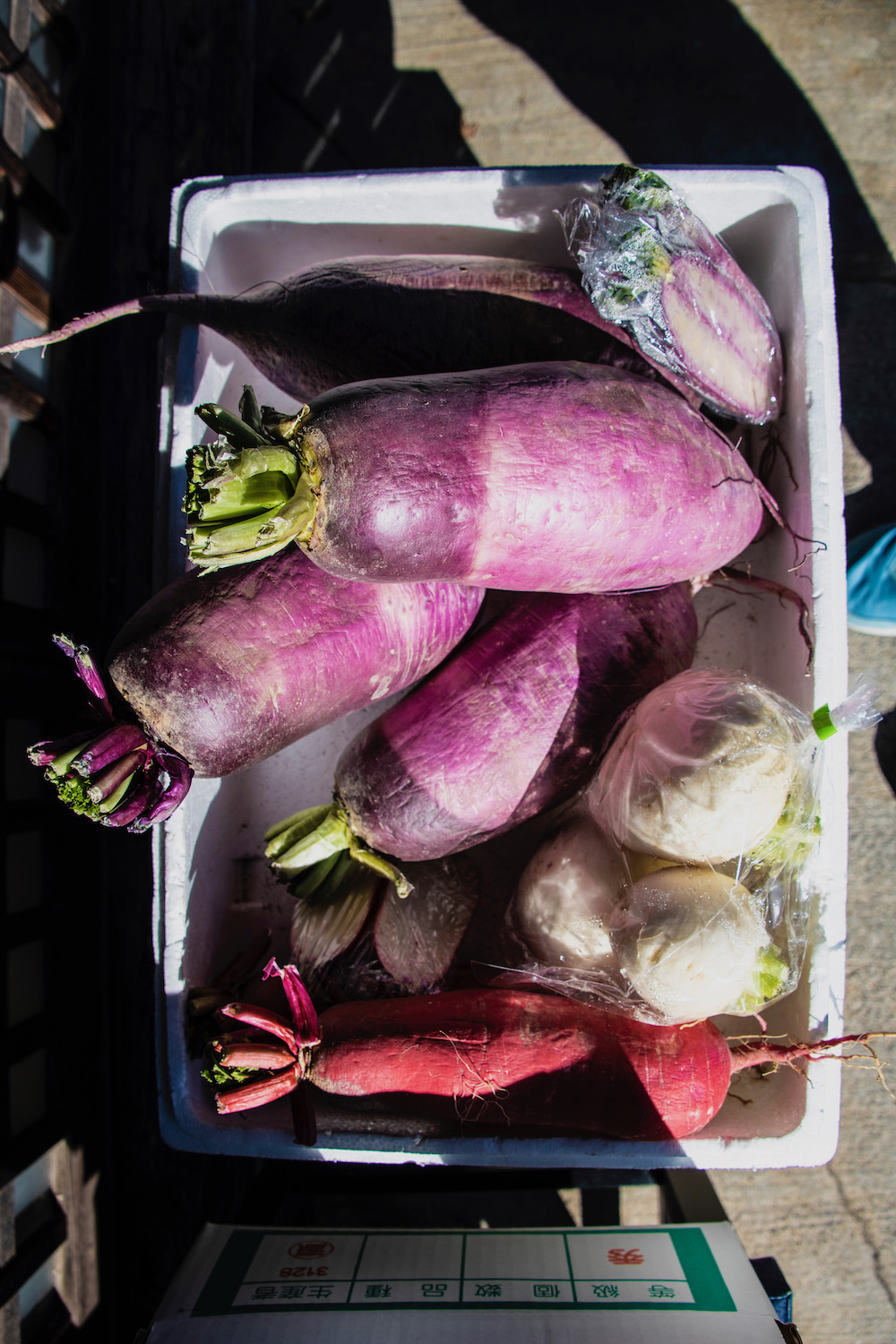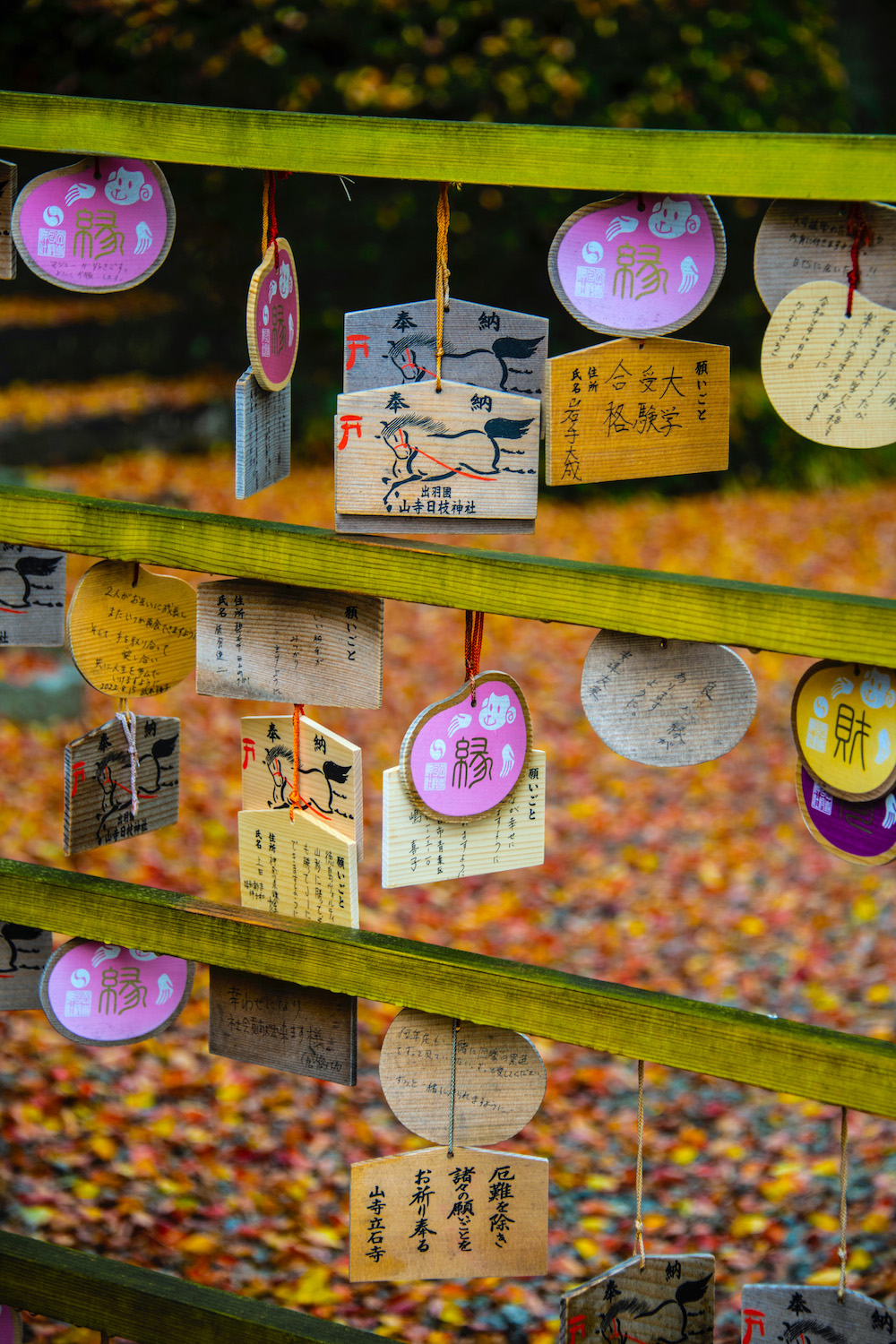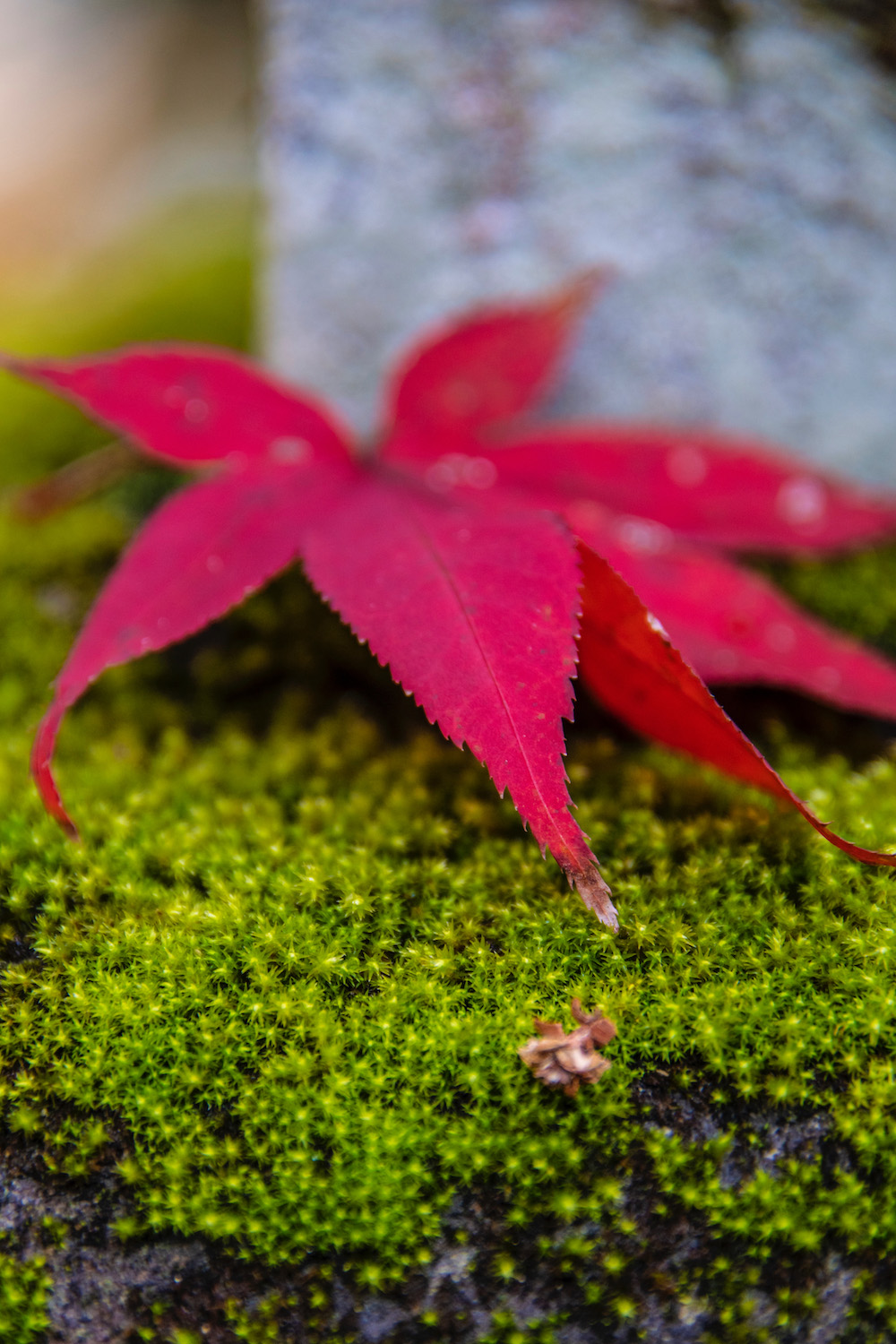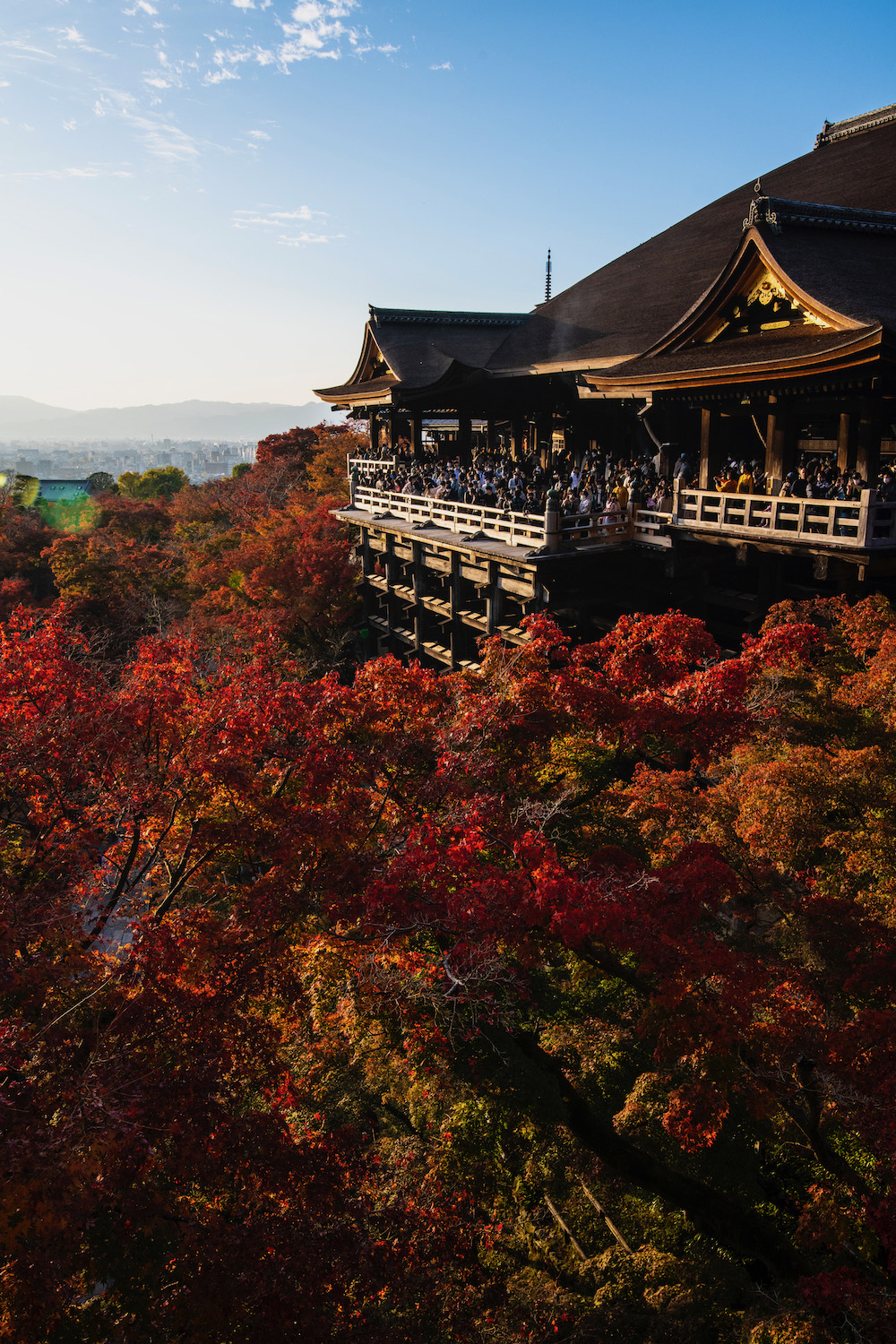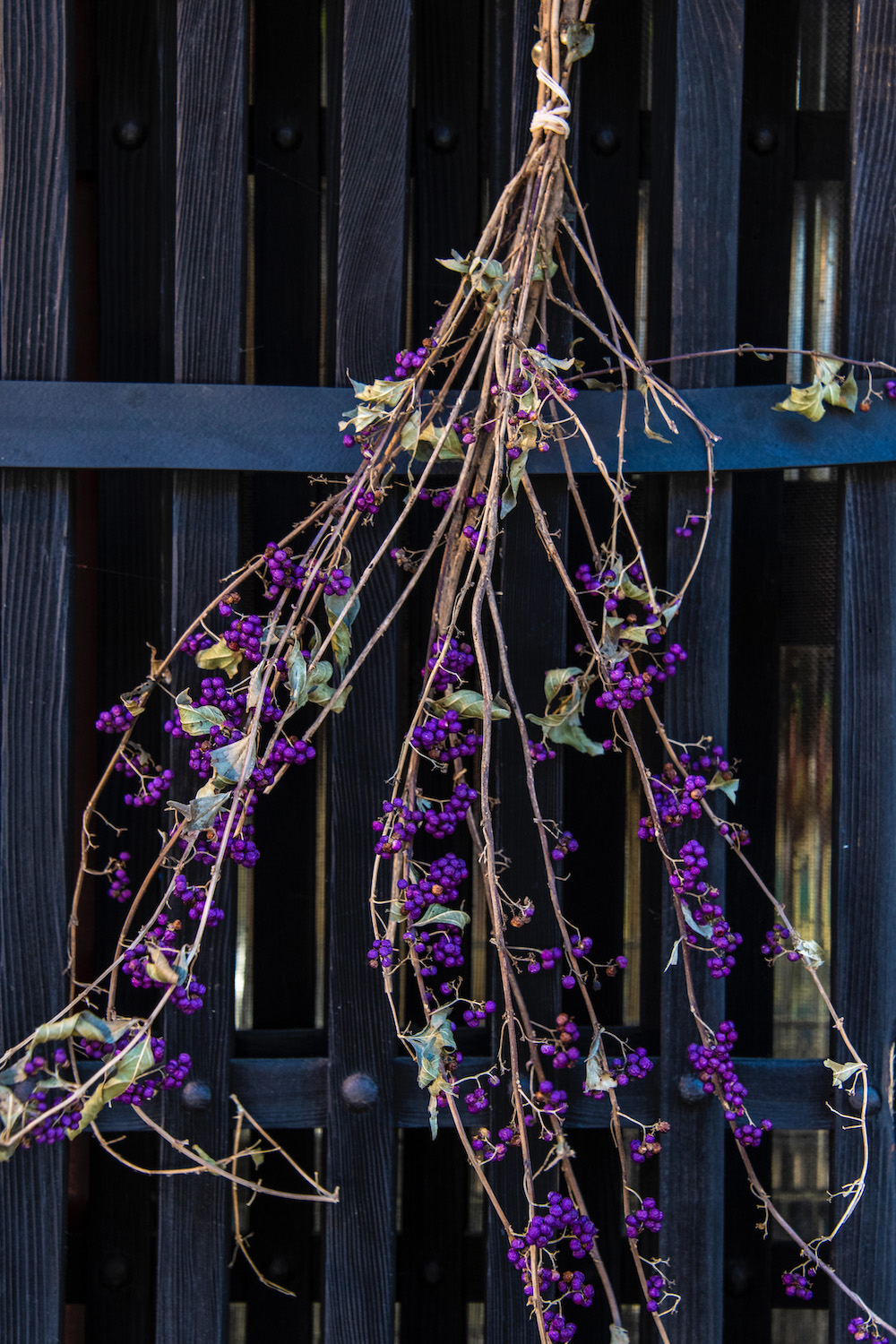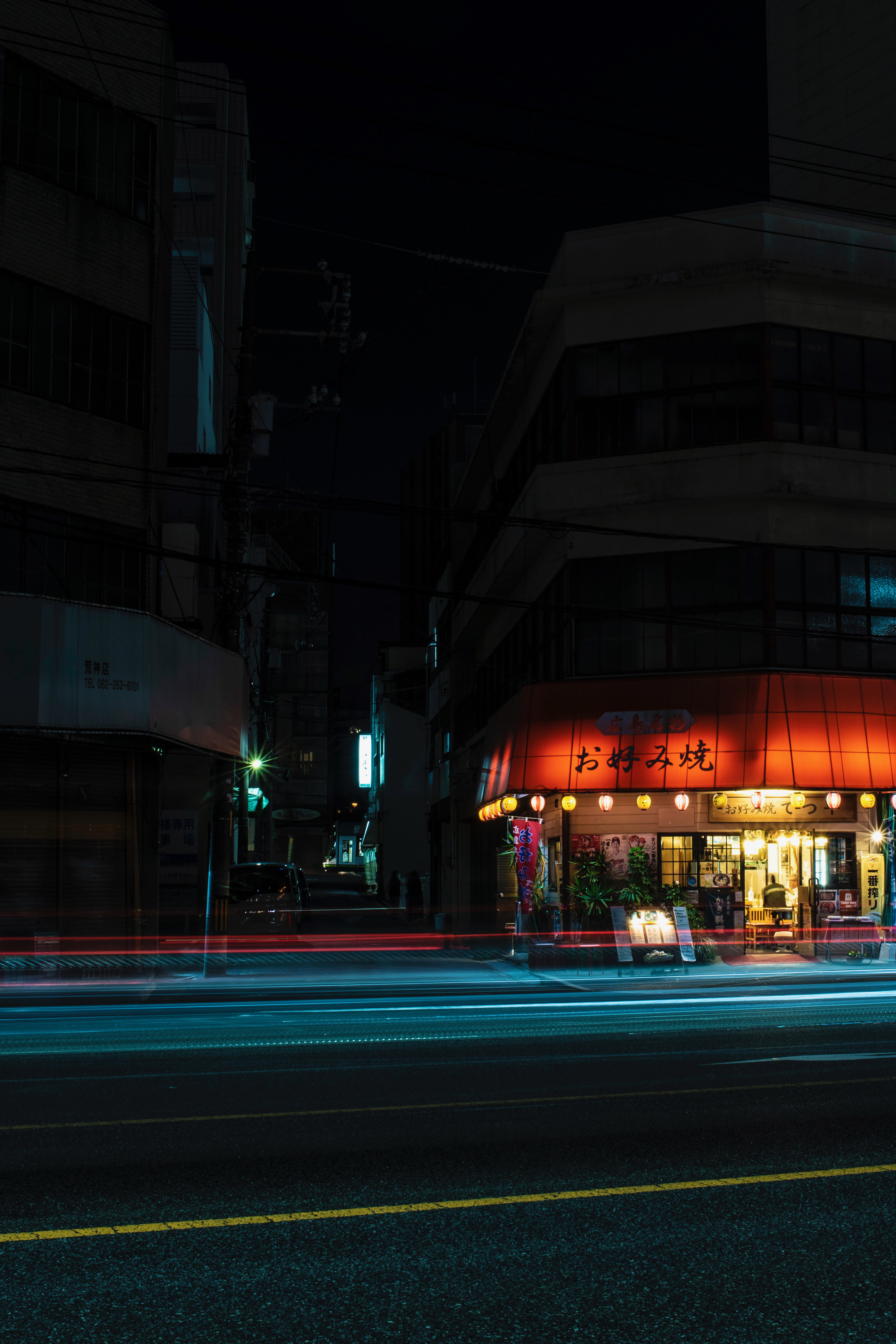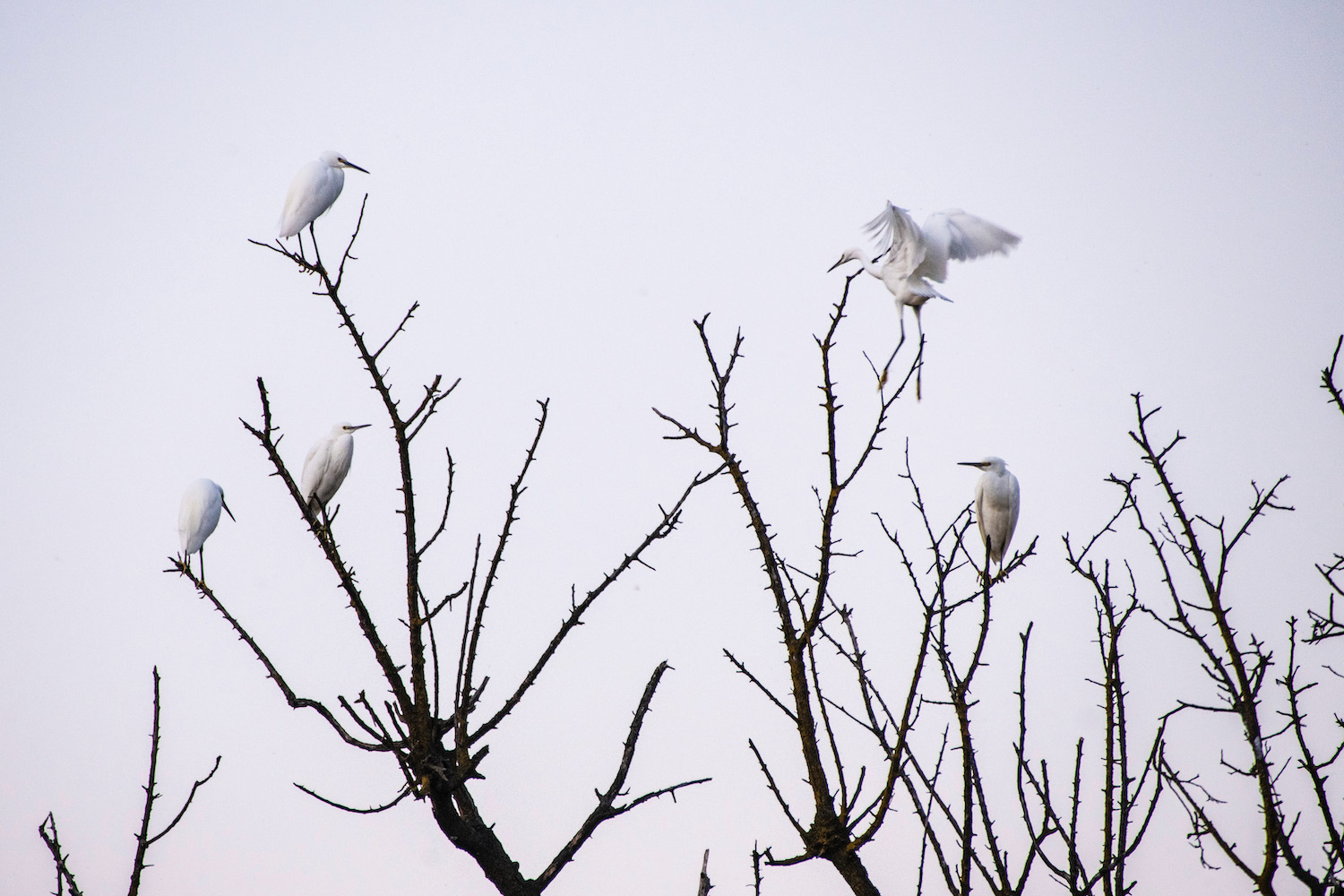“Is that it?” My friend Eriko laughed, half-seriously, as we made our way up the mossy, moist stone steps leading away from a random parking lot in the rural, inland part of Japan’s Hyōgo prefecture on the last full day of my first post-pandemic kōyō trip.
A tall trickle poured down the emerald hillside, behind an insubstantial momiji-no-ki that was nonetheless magnificent in its seasonal crimson. The ascent was trying for Eriko, who had changed into the only pair of flats I’ve ever seen her wear, but wondered aloud whether it might’ve been easier to hike in her trademark heels. I only felt inspired to snap a couple of pictures.
As Eriko shot a short video, I noticed that the trail continued—I wondered if the “real” waterfall might be waiting around the bend. I asked if we should continue; we concurred immediately.
“I guess that was it,” I conceded as we reached the top of the landing, which only continued for about 50 meters past the point where the trail ceased being visible from our previous perch. I say “conceded,” but we had clearly won: What awaited us was much better than any taki I’d ever seen in Japan.
It was an ironic but much appreciated twist of fate. While I always looked forward to offbeat adventures with Eriko, whom I’d met during my first stint living in Bangkok over a decade earlier, I hadn’t expected much from this particular destination. Certainly, I did not place much stock in our adventure superseding or even matching the ones I’d enjoyed during my previous near-month of travel.
Having arrived at Haneda Airport during the final hours of November 2, I’d immediately headed north into Tochigi prefecture—it was my first time seeing historical Nikkō during the autumn. The scarlet and tangerine hues that flanked the city’s famous bridges, shrines and and abysses—not to mention, its own absolutely massive waterfall—were right at their peak. But I wasn’t.
“So what was it?” Eriko asked as we passed under a torii and inside the cave that hid the main honden of the mysterious shrine neither of us had expected would await us. Her skirt perfectly matched the peculiar daffodil paint of the temizuya purification fountain.
“A virus,” I declared, then immediately elaborated. “But not covid.”
“Which virus?”
I shook my head, taking care not to slip on the pebbles lining the inner sanctum of the cave, whose slickness shone in the few photons of light that had managed to follow us in.
The doctor hadn’t known, or really even seemed to care. To counter my main symptom (the worst sore throat I’d had since childhood) as the virus ran its course, he’d prescribed me anti-inflammatory NSAIDs (which are unavailable over the counter in Japan) and some other medicine Google told me was typically used for menstrual bleeding, and told me to drink warm water and gargle often.
My sudden sickness, combined with an equally sudden revision to Japan’s official autumn leaves forecast, caused me to recalibrate my trip.
First, I decided to simplify the first couple of weeks. Rather than moving hotels every 2-3 days and criss-crossing northern and central Japan like a madman, I would hunker down in a hotel near Tokyo’s Ueno Station and leverage the efficiency of the Shinkansen to explore would-be overnight destinations as half- or full-day trips.
Secondly, I shifted my focus further south and west—Fukushima prefecture instead of Aomori; Nagano instead of Niigata—to account for the projected earlier peak of the red and yellow leaves.
Finally, I shortened my total stay from five weeks to three, upon realizing I would be left with 10-14 days of mostly-fallen leaves I’d thought would still be on the trees when I first put my itinerary together.
Which is not to say I dislike fallen leaves—quite the contrary.
Eriko took this a step further. “Aki no fubuki are a sign from god,” she beamed, arms outstretched, as dozens of them rained down on her during a strong gust of wind, which blew through the valley after we’d descended to the temple that was apparently the main reason people came here. The waterfall, the man manning the parking lot had told us, was merely a “bonus.”
Although I’d never heard of the temple (Ganryu-ji) before, both its visual and spiritual inspiration referenced dozens of more famous sacred sites throughout Japan.
Its tiny jizō Buddhas numbered 88 (like the temples along the pilgrimage trail of Shikoku island); a modest statue dedicated to Kūkai (the monk who founded the town atop Wakayama prefecture’s Mt. Koya in the 8th century) stood behind a shrubby aodamo ash, whose leaves also matched Eriko’s skirt.
The roof of the main temple building evoked those of the gasshō farmhouses in Shirakawago, a postcard-perfect village in the Japanese Alps between the cities of Kanazawa and Hida-Takayama.
As we neared the car, which I only then realized was parked under a maple of a similar salmon color, Eriko explained that she had been praying as the ha were raining down on her. She didn’t tell me for what; I didn’t ask her.
By the time my stay in Tokyo had expired, I was mostly back to normal; I no longer woke up in the middle of the night in excruciating pain, or had to avoid even marginally solid foods.
My first destination was the small town of Asago (which, coincidentally, was also in Hyōgo-ken), famous (as much as such a backwater can be famous) for its proximity to the ruins of Takeda-jō, also known as the “castle in the clouds.” While the unkai hadn’t been as prominent as I’d hoped when I booked my stay at the humble ryokan months earlier, I’d managed to photograph it in a way that got the job done.
Next up was two days in Hiroshima prefecture: One on Miyajima island, and another divided between Hiroshima’s city center and the adjacent harbor city of Onomichi, with an interstitial excursion to the Bizan Historical Quarter in Okayama’s Kurashiki thrown in for good measure.
It had been my first time on Miyajima since my very first trip to Japan in 2014; I decided to return there in 2022 because more than three years of renovations on the famous “floating” Itsukushima Shrine had finally been completed. To my surprise and delight, given the southerly geography and mild weather of the Setouchi region, the maples and ginkgoes on the island were all at or near their peak, which also proved true both in Hiroshima-proper and in Onomichi.
My final stop, as had been the case during my impromptu post-reopening September trip, would be Kyoto, where I was even less confident that I’d manage to see leaves at or near peak color.
“But all the places you visited in Kyoto were at their peak?” Eriko confirmed, astonished, when I told her of the good kōyō fortune I’d experienced in Japan’s former capital—my former home, as we drove out of the ravine.
I nodded. “Daigo-ji, Kiyomizu-dera, Arashiyama, even the temple in Nagaokakyo I visited with another Japanese friend and his family. Piercing akai-no-ha; soothing ki-iro-no.”
In total we’d spent more than an hour divided between the waterfall, the cave shrine and the temple neither of us had imagined visiting when we’d set out that morning from Nishi-Akashi station. As we made our way to lunch, a pair of imposing teishoku sets centered around ebi no tempura and katsuo no sashimi, I realized the day had been a microcosm of my trip as a whole.
Three weeks earlier, the best I thought I could’ve hoped for was swallowing without wanting to slit my own throat. Today, I was not only completed devoid of pain, but bathing in the satisfaction of unexpected serendipity—transcendence, really—with one of my oldest friends (whose very presence, to her credit, always seems to have a way of compelling the stars to align).
A straight line is the shortest distance between two points, but it’s rarely the most exciting one. And transformation is as much a destination as a journey: You never really know how profoundly you’ll change until your empty chrysalis is withering on the tree as you flutter away from it.
Yes, I thought to myself, recalling the question Eriko had posed to me earlier in the day as we climbed up toward Dokko-no-taki trickling in the distance. That’s it.
